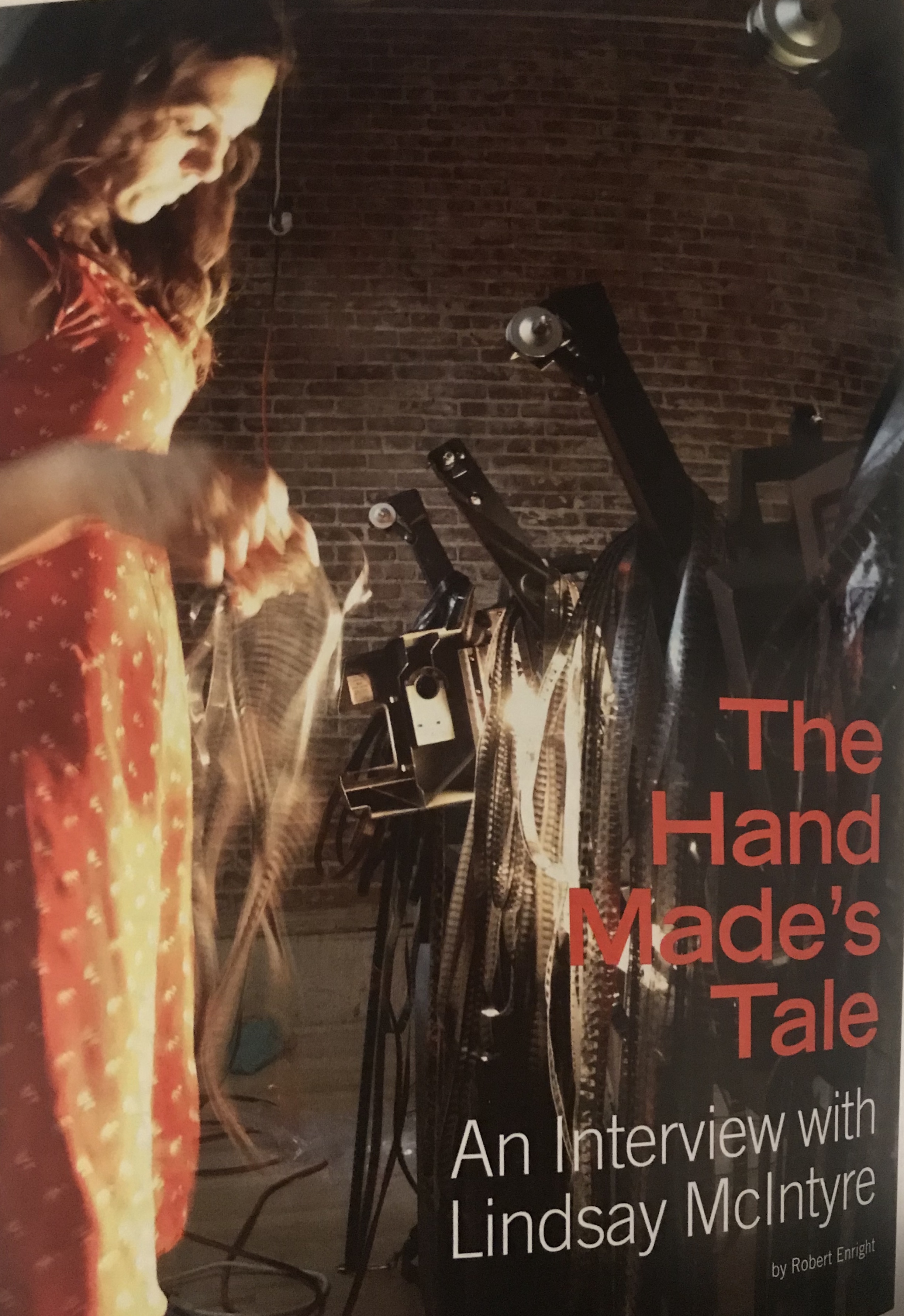Lindsay McIntyre Featured in 'Border Crossings' Magazine

Posted on | Updated
The in-depth interview by Robert Enright digs into Lindsay's current practice, praxis, and how both were sparked by a found piece of film.
Film + Screen Arts faculty member Lindsay McIntyre is the subject of a feature interview by Robert Enright in the current issue of Border Crossings magazine.
In the article, Enright characterizes Lindsay's films as "familial and cultural meta-narratives; at the same time that they tell the story of her Inuk great-grandmother’s life, they also tell the story of their own making."
He writes: "Much of their power comes from their material presence. McIntyre makes her own emulsion, so that her films look as if they have come to us from another time. The scratching and degradation are utterly seductive; the mind wants to understand what the eye is seeing, and what we are seeing can be everything from an ulu, the Inuk cutting tool, to caribou teeth strung on a wire and held in the beautifully lived-in hands of a matrilineal family member. She can run her camera lens over the weighty surface of a massive steel vessel caught in the Arctic ice, or in her backyard garden where she records her daughter’s flickering, lyric presence."
In describing the "impressive" range of Lindsay's filmography, Enright says that "(h)owever different the films may be in subject matter, her signature sits on them all, a kind of visual fingerprint."
Indeed, as Lindsay herself says in the interview, "(t)here is always the mark of me as a maker in my works.”
She tells Enright: "I think that film is my material practice in the way that paint might be for a painter or beadwork might have been for my grandmother. It’s the way that I need to work through things. It comes from the fact that my first medium and first love is actually drawing. It is so important for me to have tools in my hands and to be actually manipulating those things, physically. I’m hand-processing film, I’m sometimes making the emulsion myself and I’m editing the film on a Steenbeck, physically cutting it. So in all respects it is always in my hands. I’m not a careful filmmaker; I’m not one to wear white gloves and be careful and delicate with negatives."
You can read the excellent interview in its entirety here.